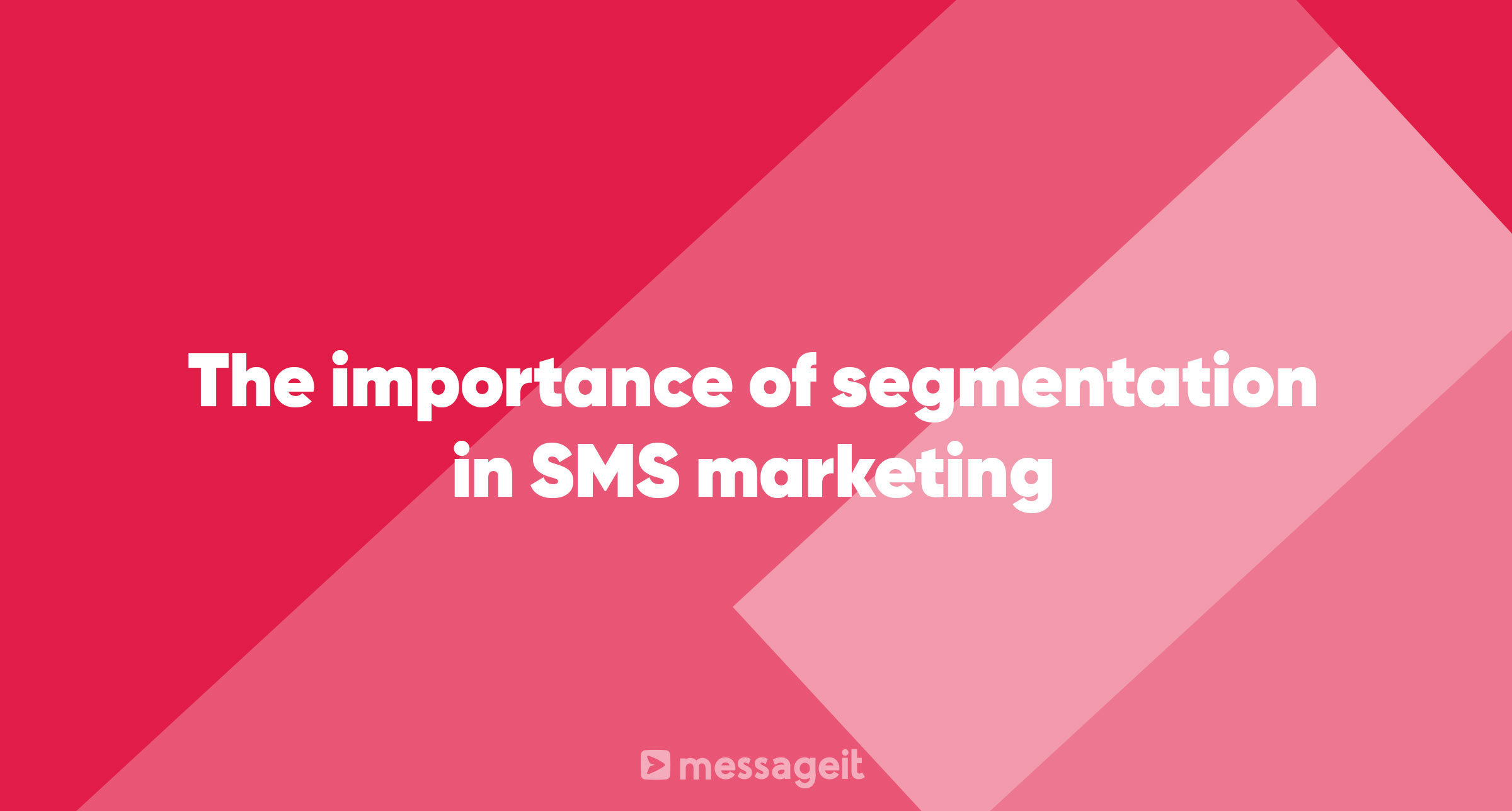SMS marketing is a highly effective strategy for engaging directly with customers. However, to make the most out of this channel, businesses must employ an essential tactic: SMS segmentation.
What is SMS Segmentation?
SMS segmentation involves dividing a broad audience into smaller groups based on shared characteristics. These characteristics could range from demographic factors like age and location to behavioral indicators like past purchases or interaction frequency.
By segmenting their audience, businesses can deliver more personalized and relevant messages to each group, thus enhancing engagement and conversion rates.
Why is SMS Segmentation Important?
SMS segmentation is pivotal in creating personal connections with customers, thus fostering loyalty and satisfaction. When customers receive messages tailored to their preferences, they're more likely to engage with the brand.
Moreover, segmentation enhances efficiency for both the business and the customer. Businesses can target the right audiences with the right messages, saving time and resources. Customers, on the other hand, receive content they're genuinely interested in, enhancing their overall experience.
How to Segment Your SMS Marketing Lists
There are numerous ways businesses can divide their SMS marketing lists. Here are 15 segmentation strategies that can be highly effective:
- Subscription Date: Segmenting users based on when they subscribed allows businesses to send appropriate welcome messages or follow-ups to newer subscribers.
- Past Purchases: Customers who have made previous purchases should receive personalized follow-up messages about their satisfaction with the product or service.
- Purchase Interests: Once a customer shows interest in a particular product, businesses can add them to a segment for that product and send them relevant updates or similar product recommendations.
- Cart Abandonment: Customers who abandon their shopping carts can be added to a specific list and receive follow-up messages encouraging them to complete their purchase.
- Sales Cycle Stage: Customers at different stages of the sales cycle (new leads, qualified leads, customers) should receive different messages tailored to their stage.
- Loyalty Status: Long-term customers or those enrolled in a loyalty program can be added to a special list and receive VIP deals or early product announcements.
- Satisfaction Index: Businesses can segment customers based on their satisfaction scores, sending personalized follow-ups to those with lower scores.
- Survey Status: Customers who haven't responded to feedback surveys can be added to a specific list and receive reminders to fill out the survey.
- Interaction Frequency: Customers who frequently text the business can be added to a specific list and receive company updates or survey requests.
- Cross-Channel Interest: Customers who are subscribed to multiple channels (like email and SMS) can be added to a special list and targeted with cross-channel campaigns.
- Event Attendance: Customers who attend local events or visit a brick-and-mortar store can be added to a specific list and receive event invitations or in-store notifications.
- Entry Point: Businesses can segment their customers based on the entry point, such as whether they signed up via an Apple or Android device, and tailor their messages accordingly.
- Location: For larger campaigns, businesses can segment their audience based on location, sending location-specific messages to customers in different areas.
- Job: For B2B businesses, a customer's job can greatly influence the content they will be interested in. Segments can be created based on job type, industry, or seniority level.
- Persona: Businesses can create specific lists for each of their customer personas, extending their usual marketing targeting techniques to SMS marketing.
Engaging with Different Segments
Once businesses have segmented their audience, they can then create and send messages that are hyper-targeted to each segment. Whether it's sending product updates to customers interested in a specific product, or sending event invitations to local customers, SMS segmentation allows businesses to send the right message to the right people at the right time.
Summing Up
In conclusion, SMS segmentation plays a crucial role in maximizing the effectiveness of SMS marketing. By delivering personalized and relevant messages, businesses can foster stronger relationships with their customers, leading to increased loyalty and higher conversion rates. Therefore, businesses should leverage the power of SMS segmentation to take their SMS marketing strategy to the next level.
